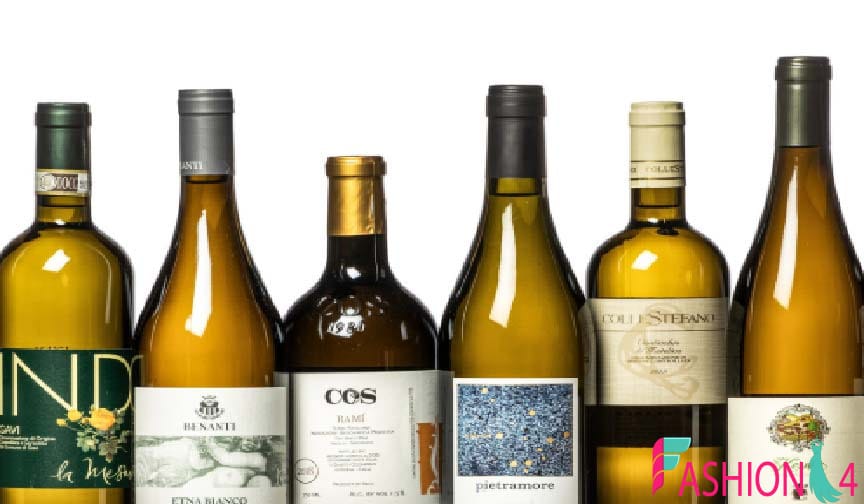
Introduction
Italian white wine isn’t just a drink; it’s an experience that carries centuries of tradition, passion, and craftsmanship in every bottle. Have you ever wondered why a crisp glass of Pinot Grigio or a floral Moscato can transport you straight to the rolling hills of Tuscany or the sun-soaked Amalfi Coast? With its unmatched diversity and rich heritage, Italian white wine has a flavor for every palate. Let’s embark on this flavorful journey together and discover what makes these wines truly extraordinary.
Profile of Italian White Wines
| Variety | Flavor Notes | Region |
|---|---|---|
| Pinot Grigio | Light, citrusy, crisp | Northern Italy (Veneto) |
| Moscato d’Asti | Sweet, floral, effervescent | Piedmont |
| Soave | Dry, nutty, mineral-rich | Veneto |
| Verdicchio | Fresh, herbaceous, citrus | Marche |
| Arneis | Fruity, floral, full-bodied | Piedmont |
| Trebbiano | Neutral, slightly fruity | Central Italy |
| Vermentino | Zesty, saline, tropical | Sardinia |
| Greco di Tufo | Full, peachy, almond notes | Campania |
| Fiano | Rich, honeyed, smoky | Southern Italy |
| Malvasia | Aromatic, tropical, herbal | Various regions |
Why Italian White Wines Stand Out
Rich History and Heritage
Italian winemaking dates back over 2,000 years, blending traditional methods with modern techniques. Each bottle tells a story of its region, climate, and local culture.
Unmatched Variety
Italy boasts over 400 native grape varieties! From the light and breezy Pinot Grigio to the complex, nutty Soave, there’s truly something for everyone.
Unique Terroirs
Italy’s diverse climates—from the alpine coolness of Trentino to the warm breezes of Sicily—create distinct flavor profiles that can’t be replicated anywhere else.
Popular Italian White Wine Varieties
Pinot Grigio
When you think of Italian white wine, Pinot Grigio often comes to mind. Its refreshing citrus notes and clean finish make it a global favorite. Perfect for summer afternoons, it pairs wonderfully with seafood and light salads.
Moscato d’Asti
Looking for something sweeter? Moscato d’Asti offers a delightful balance of floral aromas and a gentle fizz. Imagine sipping this after a hearty Italian dinner—it’s dessert in a glass!
Soave
Hailing from Veneto, Soave is known for its nutty undertones and mineral richness. This wine complements creamy pastas and mild cheeses like a dream.
Verdicchio
A lesser-known gem, Verdicchio brings crispness with herbal and citrusy notes. It’s an excellent companion for grilled fish or a caprese salad.
How to Pair Italian White Wines with Food
Pairing wine with food is like finding the perfect dance partner—they should complement and enhance each other.

Seafood and Shellfish
Pinot Grigio or Vermentino, with their zesty profiles, are ideal matches for shrimp scampi, oysters, or grilled fish.
Creamy Pasta and Risotto
Soave or Fiano, with their nutty and rich textures, pair beautifully with creamy dishes like risotto al limone or Alfredo pasta.
Light Appetizers
Moscato d’Asti is an unexpected but delightful partner for salty starters like prosciutto-wrapped melon.
Cheese Boards
From nutty pecorino to creamy burrata, Italian white wines like Arneis bring out the best in cheeses.
Tips for Enjoying Italian White Wines
- Serve at the Right Temperature: Most Italian whites shine between 45-50°F.
- Use the Right Glassware: A standard white wine glass allows the aromas to flourish.
- Store Properly: Keep unopened bottles in a cool, dark place and consume opened ones within 3-5 days.
- Try Regional Pairings: Explore pairing wines with traditional foods from their respective regions for an authentic experience.
Sustainability in Italian Winemaking
Italian winemakers increasingly embrace sustainable practices, from organic farming to biodynamic methods. This not only enhances the quality of the wine but also supports the environment. Look for labels like DOC (Denominazione di Origine Controllata) or IGT (Indicazione Geografica Tipica) for authenticity and quality assurance.
Frequently Asked Questions (FAQs)
1. What makes Italian white wine unique?
Italian white wines are unique because of their diversity in grape varieties, climates, and winemaking traditions. Each region offers something special, making every bottle a new adventure.
2. How do I choose the right Italian white wine?
Consider the flavor profile you enjoy. For something light and crisp, go for Pinot Grigio. If you prefer sweet wines, Moscato d’Asti is a great choice.
3. Are Italian white wines expensive?
Not necessarily! Italy offers a range of white wines, from affordable everyday options to premium bottles. You can find great quality at every price point.
4. How long can I store Italian white wines?
Most Italian whites are best enjoyed young, within 1-3 years of purchase. However, fuller-bodied wines like Fiano can age gracefully for a few more years.
5. What foods pair best with Italian white wine?
Italian white wines pair well with seafood, light pasta dishes, cheeses, and even desserts. The key is to match the wine’s intensity with the dish’s flavors.
Conclusion
From the crisp and refreshing to the rich and full-bodied, Italian white wines offer a diverse palette of flavors for wine enthusiasts and casual drinkers alike. Whether you’re savoring a glass with a meal or celebrating life’s moments, these wines have a way of turning ordinary experiences into unforgettable ones. So, why not explore the world of Italian white wine today?
Cheers to new flavors and lasting memories! 🍷
MORE VISIT, Fashion4

